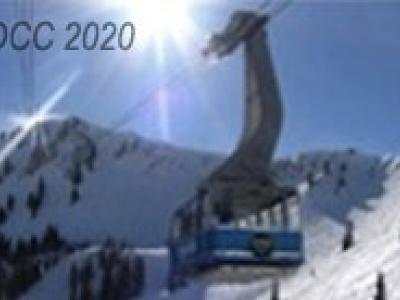
- Read more about Densely Connected Unit based Loop Filter for Short Video Coding
- Log in to post comments
With the rapid development of Internet, short videos draw more and more attentions nowa- days. Due to the small scale of short videos, image-level coding scheme can be applied to improve compression efficiency. In this paper, we propose a densely connected unit based loop filter for short video coding in H.266/VVC. In the proposed loop filter, the densely connected units are specially designed to extract feature maps, and fully decompose videos. By densely connection between layers, the designed units can reuse feature maps, and re- duce the redundancy of features.
- Categories:
 24 Views
24 Views
- Read more about Statistical Modeling based Fast Rate Distortion Estimation Algorithm for HEVC
- 1 comment
- Log in to post comments
Rate distortion optimization (RDO) is the basis for algorithm optimization in video coding, such as mode decision, rate control and etc. Minimizing the rate distortion coding cost is usually employed to determine the optimal coding parameters such as quantization level, coding mode, and etc. However, rate and distortion calculations for optimal solution decision from massive possible candidates suffer from dramatically high computation complexity.
DCC Poster.pdf
- Categories:
 43 Views
43 Views
- Read more about Temporal Redundancy Reduction in Compressive Video Sensing by using Moving Detection and Inter-Coding
- Log in to post comments
Compressive sensing is a simultaneously signal acquisition and compression technique for efficiently acquiring and reconstructing a signal from a small number of measurements, which can be obtained by linear projections onto sparse signal. In order to further compress the measurements, many works applied intra prediction-based measurement coding. In this paper, we proposed temporal redundancy reduction in compressive video sensing by using moving detection and inter-coding.
DCCPOSTER.pdf
- Categories:
 64 Views
64 Views
- Read more about DRASIC: Distributed Recurrent Autoencoder for Scalable Image Compression
- Log in to post comments
We propose a new architecture for distributed image compression from a group of distributed data sources. The work is motivated by practical needs of data-driven codec design, low power consumption, robustness, and data privacy. The proposed architecture, which we refer to as Distributed Recurrent Autoencoder for Scalable Image Compression (DRASIC), is able to train distributed encoders and one joint decoder on correlated data sources. Its compression capability is much better than the method of training codecs separately.
- Categories:
 36 Views
36 Views
- Read more about Gradient-based Early Termination of CU Partition in VVC Intra Coding
- Log in to post comments
- Categories:
 94 Views
94 Views
- Read more about Video denoising for the hierarchical coding structure in video coding
- Log in to post comments
In modern video codecs, video frames are coded out-of-order following a hierarchical coding structure. The naive uniform video denoising, where denoising is applied indifferently to each frame, does not improve the compression performance. In our work, we only apply denoising to frames at layer 0 and 1. The denoising leads to a significant reduction of bit rates while maintaining temporal correlation. PSNR scores of the filtered frames decrease but PSNR scores of the unfiltered frames remain or even improve.
- Categories:
 72 Views
72 Views
- Read more about An Adaptive Quantization Based PVC Scheme for HEVC
- Log in to post comments
In order to achieve highly compact representation for videos, we propose an adaptive quantization based perceptual video coding (PVC) scheme in this paper. Because human only perceive the limited discrete-scale quality levels, the perceptual quantization is transformed into the problem of how to determine the maximum quantization parameter (Qp) under the same perceptual quality level. So, the relationship between perceptual quality level and quantization parameter is analyzed with the statistical way in this paper.
- Categories:
 35 Views
35 ViewsAdaptive HTTP streaming is the preferred method to deliver multimedia content in the internet. It provides multiple representations of the same content in different qualities (i.e. bit-rates and resolutions) and allows the client to request segments from the available representations in a dynamic, adaptive way depending on its context. The growing number of representations in adaptive HTTP streaming makes encoding of one video segment at different representations a challenging task in terms of encoding time-complexity.
- Categories:
 286 Views
286 Views
Modern video codec uses arithmetic coding for entropy coding. The arithmetic coding asymptotically achieves the entropy bound provided the true probability distribution. Hence the compression efficiency heavily relies on the ability to capture the time-variant probability model in video signals. Variants of first-order linear probability model update schemes have been used in recent generation video codecs. Built on top of those, a multimodal estimation scheme that forms a higher order probability model update has been proposed in this work.
slide_dcc.pdf
- Categories:
 93 Views
93 Views
- Read more about Convolutional Neural Network-Based Coefficients Prediction for HEVC Intra-Predicted Residues
- Log in to post comments
- Categories:
 38 Views
38 Views